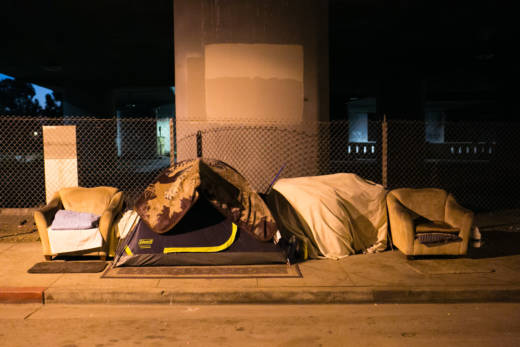Four cities -- Oakland, Berkeley, Hayward and Fremont -- will receive more personalized reports soon that detail specifics for their respective cities. The county data released Thursday will be followed by a more comprehensive report in the summer. But here are some takeaways from the report:
- There were 4,040 homeless people counted in 2015. That number increased to 5,629 in 2017.
- 69 percent of the people counted were not sheltered (living on streets, in cars, etc.), which is about a 10 percent increase from 2015.
- 82 percent of those surveyed said their prior residence was in Alameda County.
- 58 percent have been homeless for at least one year.
- The number of homeless veterans increase from 388 in 2015 to 531 in 2017.
See the full brief here.
Here is the 2015 report.
What Led to the Increase
In Alameda County, median rents have increased 25 percent since 2015, while median household income increased only by 5 percent, according to EveryOne Home. Stories about evictions and displacement have become commonplace as Bay Area cities react with temporary solutions like sanctioned encampments, rent control or other eviction protections.
The report found that 82 percent of people were living in Alameda County before they lost their home.
"This data remind us that people who are homeless are our neighbors. They lived in Alameda County before they lost their homes and they stay here because this is home to them," de Coligny said.
But homeless shelters and other programs are having trouble helping people find apartments and other homes because of the stiff competition. Many of those with housing vouchers are taking months to find a place.
De Coligny also believes that Proposition 57, which allows the early release of some nonviolent felons, has played a part in the higher number of homeless in Alameda County.
"We haven't put the return infrastructure in place to help people reintegrate, find housing and get jobs," she said.
What might also be contributing to the growing encampments in places like Oakland is the development happening in areas that have long been dormant, de Coligny said.
"People who could be invisible during their homelessness are now being pushed into big encampments," she said.
Growing Encampments, Growing Problems
There have been several fires at homeless encampments around Oakland. Acting Oakland Fire Chief Mark Hoffmann recalls at least four fires in the last month alone.
"It's a trend of the times," he said. "The encampments are higher density, and they’ve been longer-lived camps. So you’ve got a lot more debris and junk built up.”
A major fire burned several tents earlier this month at an encampment in West Oakland, which the city was previously using as a sanctioned site to deliver sanitation and housing counseling services. Another fire occurred early Wednesday morning under the BART tracks near the West Oakland stop.
What the County and Cities Are Doing
There are several initiatives and programs that Alameda County and its cities are implementing or considering to help alleviate homelessness.
Alameda County voters approved a $580 million housing bond in 2016 to help build thousands of affordable housing units, including supportive housing for the homeless. Voters in Berkeley and Oakland also approved bond measures that will help build affordable housing.
Alameda County is also one of 18 pilots granted more than $140 million last year from the state to implement "Whole Person Care," to address homeless people who need extra help. The county has launched a campaign to get more landlords to rent to low-income residents, de Coligny said. EveryOne Home is also seeking donations from the public to help the homeless transition into housing.
Half of Alameda County's homeless population resides in Oakland. The City Council is currently considering which of the many homeless programs should be part of the next budget.

